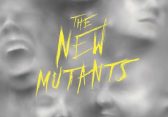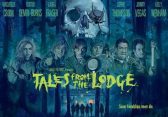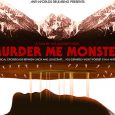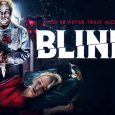To claim that Maniac pulls no punches would be somewhat of an understatement. Indeed, it seems to purposely throw extra ones, before brandishing a sharp object and tearing its menace across the screen. Whilst watching it, I writhed, recoiled, and was sometimes forced to peep through my fingers. Director Franck Khalfoun would’ve been rubbing his hands together in delight if he could’ve seen me. His remake of the psychological slasher from 1980 undoubtedly aims to shock and repulse, yet there is an undeniable intelligence to it. Some strong performances, coupled with some silky cinematography, make this one of the most memorable horror movies of recent years. Through the inventive use of POV camerawork, Khalfoun forces us into the mind of a demented man for 90 minutes. It’s intriguing stuff, and Maniac provides a welcome glossy spin on the slasher genre. The French-American movie has been given a limited release, meaning that getting round to seeing it proved to be somewhat difficult, but it’s certainly worth a look for.
The plot focuses on a man named Frank (Elijah Wood), owner of a mannequin store in New York City. Despite seeing mostly through his eyes, we know little about him. He is a shaken and seemingly nervous guy, harbouring dark and murderous intentions. At night, he stalks young women and claims their scalps to throw onto his mannequins; in his eyes, a form of preservation. Yet, Frank is not an intelligent serial-killer. He makes little effort to cover his tracks. But he does apparently have footsteps as light as a feather, enabling him to silently stalk his victims. His quavering actions seem to be misinterpreted for vulnerability by some women. There is probably some truth to this, but there is a psychotic anger that lies beneath, which erupts when Frank becomes too uncomfortable.
Wood has been gradually shaking his synonymous tag to Lord of the Rings as a brave Hobbit since the franchise ended, but if it ever needed a final tug then this is it. His dialogue-less performance in Sin City was a wicked portrayal of pure evil, and Wood incorporates elements of this into Frank in Maniac. The effect here is arguably even stronger, layering a naturally appearing oddness with uneasy quivering speech. Whilst never shy of effort, I could never really buy his transition from Harvard student to football thug in Green Street, but this I completely embraced. One day, Frank meets beautiful photographer Anna (Nora Arnezeder), and the movie provides constant tension as she remains blissfully unaware of the sickening acts that Frank commits.
The POV technique makes for a haunting touch. The camera occasionally eases away from Frank’s vision to show the bigger picture, but we’re mostly locked into seeing no further than his periphery. Khalfoun employs a blurring of the lense, and constantly shifts in and out of focus as to ensure the audience experience every single one of Frank’s emotions. Aside from the POV shots, one of the most impressive aspects of Maniac is the way in which it merges glossy cinematography with grungy content and atmosphere. It looks superb. Khalfoun’s city is one of dark skyscrapers steeped in pale light from car headlights and streetlamps, accompanied by effective use of flashbacks, hallucinations and nightmares all experienced by the demented lead. One of the best shots is when Frank goes out on a date at the beginning of the film. During drinks, suddenly time seems to grind to halt. All eyes are upon him as he begins to have blood-drenched visions of the girl sat opposite. It’s expertly done, and pretty terrifying. Some of the most disturbing images of the picture actually appear during flashbacks, where we see young Frank exposed to sights that no child should ever see. They ultimately act as the catalyst for adult Frank’s brutal murders.
There’s absolutely no escaping the obscene amount of blood and gore that splatter across the screen, but the real power of the movie lies in the moments between brutality. Here, a menacing score establishes an underlying and inescapable sense of doom. Through the obscurity of Frank’s vision, the towering skyscrapers and the blind nighttime, Maniac traps the audience in a nightmare. Any escape attempts are quelled by the thunderous soundtrack which threatens to throw you back down again, forcing you to remain part of Frank’s terrifying world. The mind-bending score is terrific. Some of it carries storm-like connotations under the soft patter of piano keys, reminiscent of the likes of 1980’s horror epics such as Halloween, whereas elsewhere heavy use of synth whines and wails to create a delightfully menacing touch. When music isn’t roaring on screen, the ambient noise is amplified, so that aspects such as breathing, hand-washing, and buzzing insects are all intense. This helps to neatly convey the headache brought on by Frank’s internal fight with sanity. Maniac will get your blood pumping whilst buckets of it spill all over the screen.
Impressed as I was, sometimes it was admittedly way too much. Some of the kills have undeniable shock value, whereas others are just needlessly over-the-top flesh-tearing fests. It’s gratuitously violent, but we are also shown how Frank came to be this monster, what drives him, and how he simply can’t – or won’t – fight the venomous urges that pulse through his body. Yeah, it’ll upset people. But if you turn up to see a movie called Maniac, with the promotional poster/DVD cover showing Wood’s empty stare in a rear-view mirror of a car that looks ready to mow down a screaming woman, chances are you know what you were getting into.


























